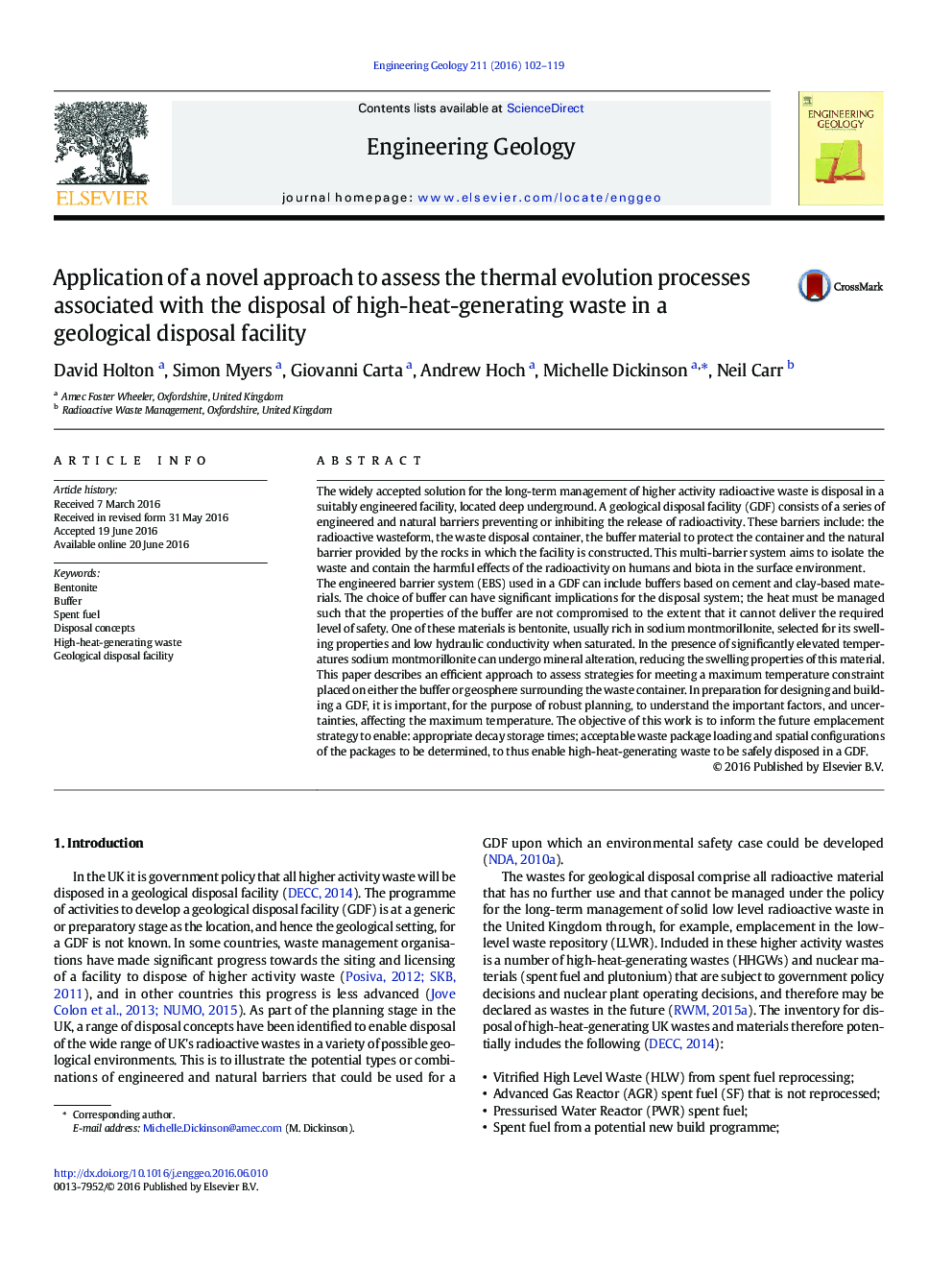| Article ID | Journal | Published Year | Pages | File Type |
|---|---|---|---|---|
| 4743095 | Engineering Geology | 2016 | 18 Pages |
Abstract
The engineered barrier system (EBS) used in a GDF can include buffers based on cement and clay-based materials. The choice of buffer can have significant implications for the disposal system; the heat must be managed such that the properties of the buffer are not compromised to the extent that it cannot deliver the required level of safety. One of these materials is bentonite, usually rich in sodium montmorillonite, selected for its swelling properties and low hydraulic conductivity when saturated. In the presence of significantly elevated temperatures sodium montmorillonite can undergo mineral alteration, reducing the swelling properties of this material. This paper describes an efficient approach to assess strategies for meeting a maximum temperature constraint placed on either the buffer or geosphere surrounding the waste container. In preparation for designing and building a GDF, it is important, for the purpose of robust planning, to understand the important factors, and uncertainties, affecting the maximum temperature. The objective of this work is to inform the future emplacement strategy to enable: appropriate decay storage times; acceptable waste package loading and spatial configurations of the packages to be determined, to thus enable high-heat-generating waste to be safely disposed in a GDF.
Keywords
Related Topics
Physical Sciences and Engineering
Earth and Planetary Sciences
Geotechnical Engineering and Engineering Geology
Authors
David Holton, Simon Myers, Giovanni Carta, Andrew Hoch, Michelle Dickinson, Neil Carr,
